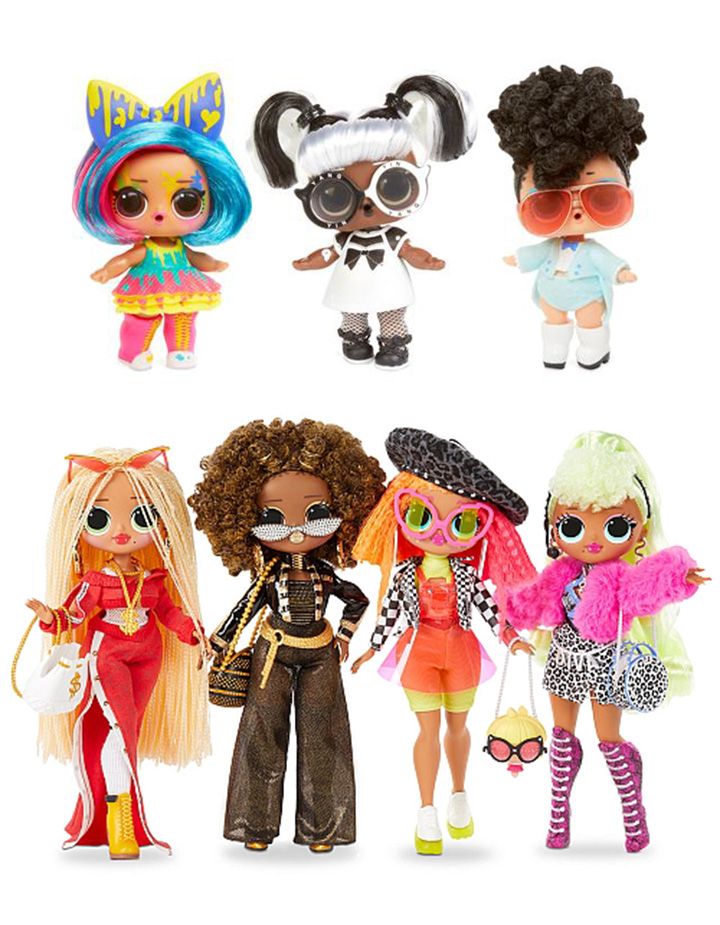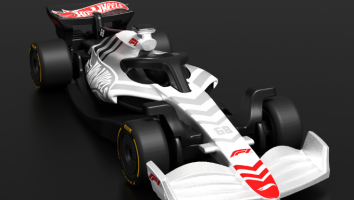According to Isaac Larian, the element of surprise is key to a successful toy property. In fact, the MGA Entertainment CEO believes in the sentiment so completely that he launched an entire doll line inspired by it. You may have heard of it…it’s a little range called L.O.L Surprise!.
The collectibles line—which features miniature fashion dolls packaged inside multi-layered balls that reveal various accessories when unwrapped—launched in late 2016 and its sales numbers back up the brand’s ongoing popularity with kids.
Market research firm The NPD Group reported that the US toy industry generated US$21.6 billion in sales in 2018, a 2% decline compared to 2017. The dolls category, however, grew by 7% during the same period, due in large part to L.O.L. Surprise! (along with Barbie and Hatchimals). Overall, the 10 top-selling traditional toy items of the year included eight L.O.L. Surprise! products.
“A real sense of surprise, something that kids have truly never seen before and aren’t expecting, is important,” Larian says. “Hatchimals [from Spin Master] was a completely unique product no one had ever seen before. Ty’s Beanie Babies were the same. Until Ty came out, nobody made plush with beans in them. Our Bratz dolls were really original. Before Bratz, Barbie was dominating the market and every doll was blonde and blue-eyed.”
And some of MGA’s biggest innovations have come from unexpected places.
How to find (and make the most of) talent
It may surprise you to learn that when it comes to new hires, Larian isn’t focused on industry experience. In fact, the California-based toymaker routinely goes directly to schools to recruit new designers.
Recent graduates haven’t yet been forced to conform to the often formulaic business, he says, and as a result are brimming with innovative ideas. MGA’s policy is that designers should follow their instincts, and create the best possible product without thinking about the logistics or costs.
“We give them wings and ask them to design the best thing they can, and see what they come up with,” Larian says. “Toymakers, often, in an effort to take the cost out of a product also take the details out. But kids naturally gravitate toward those little details, because that’s what adds magic to the toy.”
Many execs talk about the importance of listening to kids during the development process, but Larian argues that kids can’t want what they haven’t seen before. To truly surprise and delight, toymakers need to develop ranges that are beyond kids’ imaginations.
“You have to make something original, and then educate the consumer on how it’s different. That’s how you succeed,” he says. “When we came out with the L.O.L. dolls, everyone told us we’d never be able to sell a doll that people couldn’t see. And it was a risky thing to do, but once we educated people [through content on YouTube and social media posts] it became very successful.”
The blind packaging for L.O.L. Surprise! became a major selling point because of the element surprise, but also because of the level of detail the team incorporated into the unboxing experience. Too often, Larian says, packaging is seen only as a logistical matter and not as part of the creative process. He argues that it is as important as the product itself, because it is what will make a toy line stand out on shelves.
How to know when to call it quits
And toymakers should be using every tool at their disposal to be successful at retail, Larian says. The toy industry is in a period of turmoil and transition, he argues, with Toys “R” Us shuttering and franchise fatigue affecting companies big and small. And Larian believes many companies are making things even harder, with too many toycos relying on a small handful of established brands, making slightly different versions of the same products over and over.
“I hope more toy companies would come out with new products instead of taking the lazy way out and leeching onto movie-based toys,” Larian says.
Rather than taking advantage of the popularity of movie and television brands, MGA focuses on discovering burgeoning trends on YouTube and social media platforms like Instagram. The company has a department dedicated to these searches, and MGA also conducts its own research to find out what kids care about. Larian says he is willing to take a risk on ideas the team deems crazy enough to work.
“Sometimes the risks work, and sometimes they don’t. When it doesn’t work, you shut it down and move on. These days, people are afraid to take risks—especially the big companies.”
MGA has worked on brands in the past that never made it to retail. One recent example saw the company develop the range and go into production before testing determined it just wasn’t connecting with kids. According to Larian, the company spent hundreds of thousands of dollars on the range before it was ultimately shelved.
How to keep a hit property popular
But with risk often comes reward, and the potential to see the kind of success L.O.L. Surprise! has experienced makes taking a chance worth it, Larian says. And MGA still has a few shocks in store for fans of the collectibles property.
L.O.L. Surprise! Makeover Series #HairGoals (pictured, top) features real hair that kids can style, while the L.O.L. Surprise! O.M.G. Swag line (pictured, bottom) is a more traditional fashion doll take on the brand.
“L.O.L. is, by far, the biggest brand we have launched. I dare to say it’s the biggest brand any company has launched,” Larian says. “But after L.O.L. Surprise! came out, if we’d just kept on selling the range just like that, it would be out of business. Kids move on, and they want something new. So even within a brand that is innovative, you have to constantly outdo yourself and surprise children.”
























